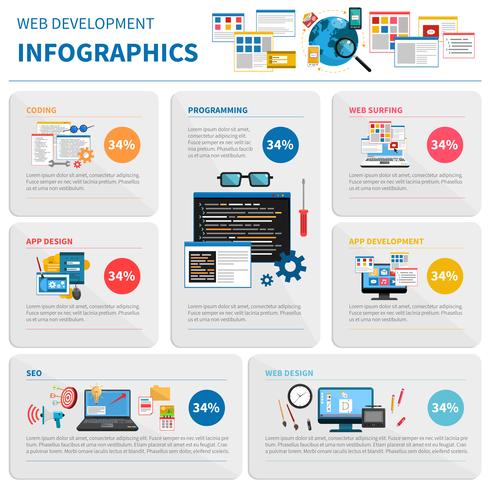The Makeover Of Online Platforms: A Trip Through Time
The Makeover Of Online Platforms: A Trip Through Time
Blog Article
Post Produced By-Carstens Wren
In the past, web sites were basic and concentrated on info. Navigating was straight, and layout was for desktop computers. Now, customer experience is vital. Data overviews layouts for very easy navigation. Responsive layouts fit various gadgets. Today, dark mode lowers stress, and minimal food selections enhance navigating. Interactive attributes engage users, and vibrant visuals attract attention. AI assimilation improves engagement. See how design has progressed to boost your on the internet trip.
Early Days of Web Design
In the early days of website design, simplicity preponderated. Websites were standard, with restricted shades, typefaces, and formats. The emphasis was on giving information rather than flashy visuals. Users accessed the net through slow dial-up links, so rate and performance were crucial.
Navigation food selections were straightforward, usually situated at the top or side of the web page. Websites were developed for desktop, as mobile browsing wasn't yet widespread. Web content was king, and developers focused on simple readability over complicated design elements.
HTML was the primary coding language used, and developers had to work within its constraints. Animations and interactive functions were minimal contrasted to today's requirements. Sites were fixed, with little vibrant material or customized user experiences.
Rise of User-Focused Style
With the advancement of site layout, a shift towards user-focused style principles has ended up being progressively prominent. Today, developing sites that prioritize customer experience is vital for involving visitors and achieving business goals. User-focused style entails comprehending the demands, choices, and behaviors of your target audience to customize the site's layout, material, and features as necessary.
Developers now perform comprehensive research study, such as user surveys and use testing, to collect understandings and comments directly from individuals. This data-driven method aids in producing user-friendly navigation, clear calls-to-action, and visually enticing interfaces that reverberate with visitors. By positioning the user at the facility of the layout procedure, websites can provide a much more personalized and enjoyable experience.
Receptive design has actually also become a key aspect of user-focused layout, making sure that web sites are optimized for different devices and screen dimensions. This versatility enhances access and usability, satisfying the varied ways customers connect with sites today. Fundamentally, the surge of user-focused design symbolizes a shift in the direction of creating digital experiences that prioritize the requirements and expectations of the end individual.
Modern Trends in Website Design
Explore the current patterns shaping web design today. One noticeable fad is dark setting style, offering a sleek and modern look while lowering eye stress in low-light environments. Another crucial trend is minimal navigation, simplifying menus and boosting customer experience by focusing on essential elements. Incorporating micro-interactions, such as computer animated switches or scrolling effects, can create an extra interesting and interactive web site. Receptive design continues to be crucial, ensuring seamless individual experiences across numerous gadgets. In addition, making use of strong typography and asymmetrical layouts can add visual passion and draw attention to certain content.
Incorporating https://internetmarketingstats85062.worldblogged.com/35748235/interested-in-harnessing-the-capacity-of-neighborhood-search-engine-optimization-discover-the-critical-strategies-that-every-local-business-proprietor-need-to-understand-to-boost-their-on-the-internet-existence-and-pull-in-a-lot-more-customers , like chatbots for customer assistance or tailored recommendations, boosts individual interaction and enhances procedures. Availability has additionally come to be a considerable fad, with developers prioritizing inclusive style practices to accommodate varied user requirements. Accepting sustainability by enhancing web site performance for rate and effectiveness is another arising trend in website design. Collaborating with customer feedback and data analytics to iterate and enhance layout continuously is necessary for staying relevant in the ever-evolving digital landscape. By welcoming these modern trends, you can create an aesthetically attractive, user-friendly web site that resonates with your target market.
Conclusion
As you assess the advancement of website layout from the early days to currently, you can see just how user-focused style has ended up being the driving pressure behind contemporary fads.
Welcome the trip of adjustment and adaptation in website design, constantly keeping the user experience at the center.
Remain present with the most up to date fads and innovations, and never ever quit developing your technique to produce aesthetically sensational and easy to use internet sites.
Develop, adjust, and create - https://www.searchenginejournal.com/enterprise-seo-freelancers/436852/ of website design is in your hands.
